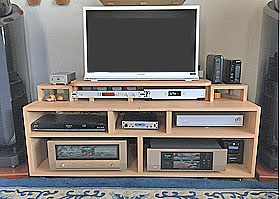https://translate.google.com/translate?hl=en&sl=ja&u=http://www.cybershaft.jp/a-products/a-products-gps.html&prev=search - 3rd review from the top
This is the experience you have changed to cyber shaft, Inc. Premium a 10MHz clock from T Inc. Thunderbolt GPSDO. About three years ago, I was reminded of the importance of the clock in the introduction of the Thunderbolt DigitalAudio playback. To pursue the possibility of Digital playback starting with its experience, it has continued its efforts even now. Clock to receive correction from GPS was thought to be the most accurate to date. It is not a mistake at the correct point. But this time, try listening to Premium, necessarily it was now that the thought-provoking about what is appropriate (preferred or not) in the Audio. I have to teach various things over the phone conversation with Mr. Hasegawa of cyber shaft company. The necessary clock in the performance of the in Audio, it can be understood as a theory, which is a short-term stability, also was able to realize it by listening to the sound.
On the recommendation of Mr. Hasegawa was the next attempt. Is a comparison audition at the Thunderbolt GPS Lock state and HOLDOVER mode. Because to say that compared to the GPS Lock state are listening also another three years on a daily basis, you do not have it, such as the signal-type switching. Listening in HOLDOVER mode only if you feel it. The result, although significant changes, such as it can be said in the words did not feel, taste the atmosphere, such as set foot in one step a quiet forest, I remember feeling as calm. HOLDOVER mode Good !! As a result,
the correction of the GPS of every moment is not necessarily required for the Audio, is better not to apply a correction to the contrary has led to think that it might than settle. OCXO short-term stability is excellent from this it is thought than preferable returned to the Audio, we decided to try the Premium.
A result, this attempt was not a mistake.
Now Premium has gained the main seat, GPSDO has become a spare parts. I am listening to the 95% classic. Equipment configuration, NAS (QNAP TS-121, SSD) → WSmartHub → SFORZATO DST-01 (Digital Strem Transport) → Accuphase → Mytek Digital Stereo 192-DSD (DAC) → Accuphase A-47 (AMP) → B & W802D, clock system (10MHz) → Antelope OCX → DST-01 and Mytec
























